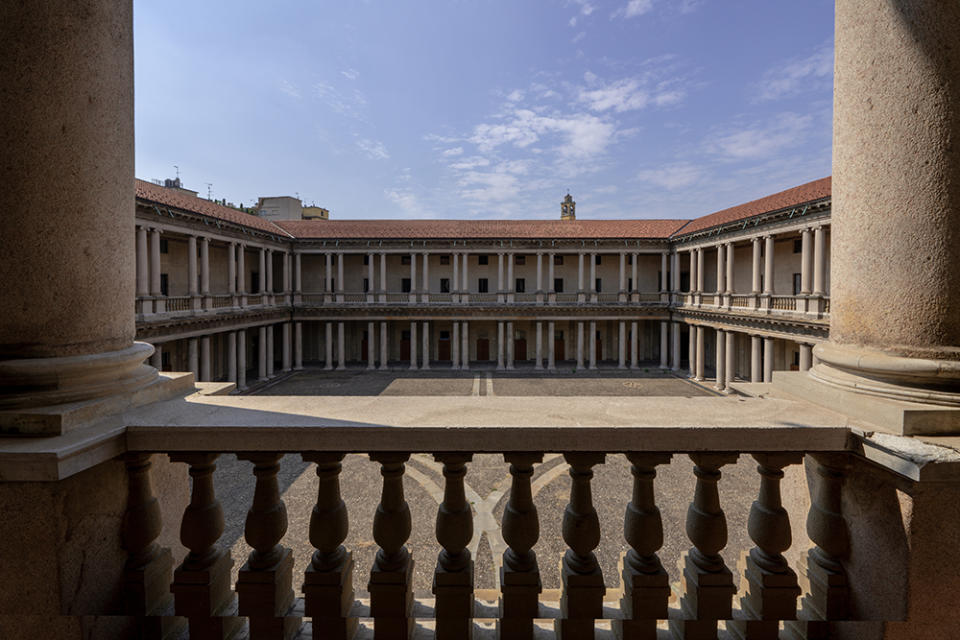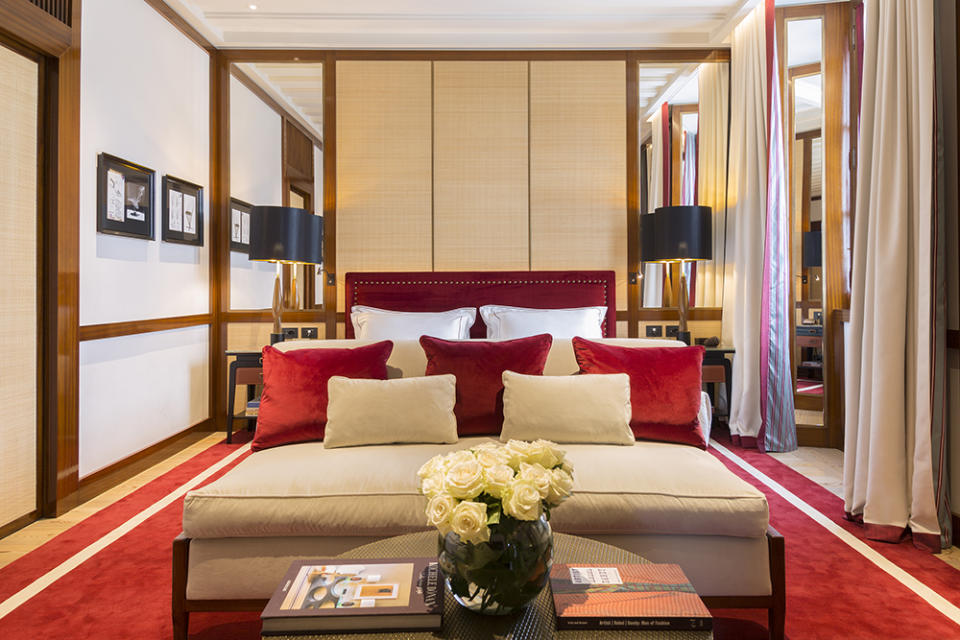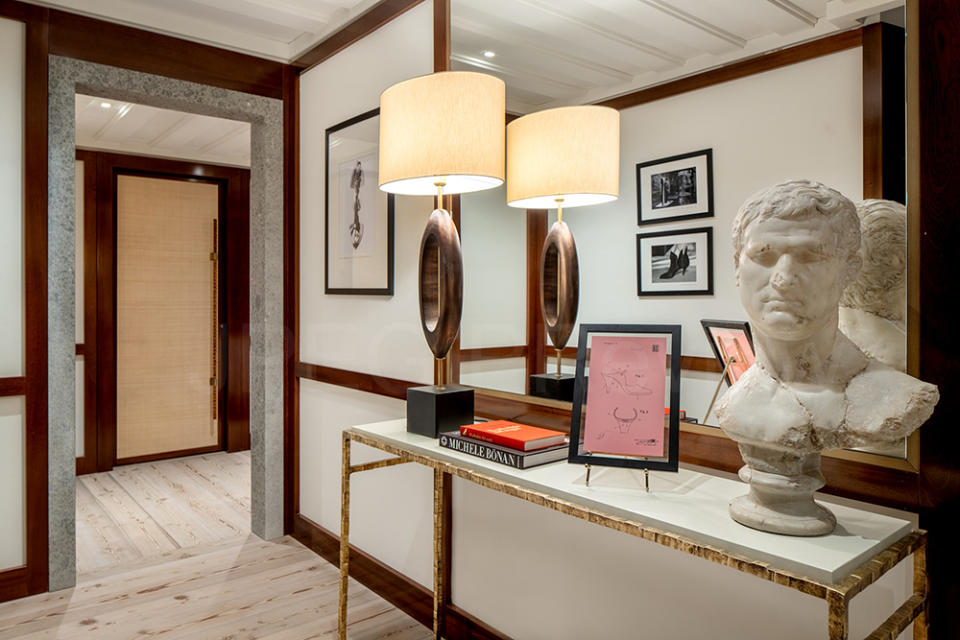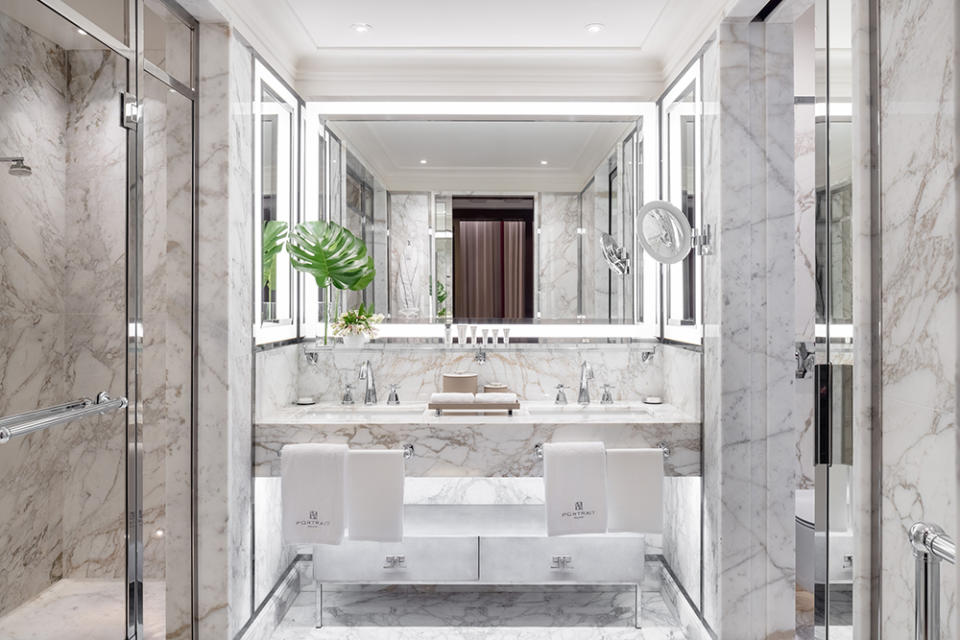How New Luxury Hotels Are Transforming Once ‘Drab’ Milan

There’s La Scala and an iconic cathedral, but Milan can be a rather boring business hub.
I lived and worked in Milan in the late 1990s and early aughts, and during a recent return visit I was surprised to discover a very different city.
More from Robb Report
How Menswear Maestro Umit Benan Became One of Milan's Most Exciting Designers
What It's Like to Stay at Casa Baglioni, a Milanese Palazzo Turned Design-Obsessed Hotel
Amid Milan's Booming Real Estate Market, Luxury Buyers Are Turning Toward Rome for Better Deals
In my old neighborhood, the once-bohemian Navigli, a chic glass elevator now anchors the courtyard of my former fifth-floor walkup apartment building. The path to see an artist friend in Isola, formerly a slightly edgy area, took me past the Blade Runner–esque Piazza Gae Aulenti, constructed as a tribute to the late Milanese architect at the end of 2012 and featuring not only the Unicredit tower and Bosco Verticale but also restaurants, shops, and a walking path to the fashionable Corso Como shopping district.
“Milan was just a gray, drab business city,” art historian and curator Sharon Hecker tells me over lunch at Michelin-starred chef Andrea Arpea’s excellent bistro in the new Foundation Luigi Rovati, which features contemporary and Etruscan art. “I’ve been here since 1990, and the big change is that Milan has become a destination for hospitality, leisure, style, architecture, design, and food.”

It all started back in 2015, when Milan hosted the World Expo. That event brought in significant investments from foreign investors such as Qatar. The money led to a wave of new buildings in the Porta Nuova neighborhood such as Boeri Studio’s Bosco Verticale, a pair of tree-festooned skyscrapers and Cesar Pelli’s UniCredit tower, the tallest building in Italy at 758 feet.
Brexit heaved hordes of formerly London-based bankers into the city, causing a run on residential real estate. A flat tax introduced in 2017 now allows foreigners, who make Italy their primary residence to pay a maximum of 100,000 euros a year in tax.
The result: Milan’s economy grew 2.2 percent last year, according to Italian think tank Prometeia, and is forecast to grow 4.8 percent this year. In 2026, Milan will host the Winter Olympics with Alpine village Cortina d’Ampezzo.
Being open for business naturally means welcoming in some markedly un-Italian efforts. Restaurant chains such as Five Guys and Starbucks have arrived. Meanwhile, soaring residential real estate prices have pushed many Milanese out of the historical center.

Five-star hotel brands such as Rocco Forte, Rosewood, Core Club, and Six Senses are all expected to open their own properties in the next few years. But the latest luxury exclamation point to arrive in Milan is Portrait.
Set dramatically in the colonnaded, 30,000-square-foot courtyard of a former seminary building, the hotel opened in December—the result of a painstaking nine-year renovation helmed by architect Michele de Lucchi and interior designer Michele Bönan. The 73 rooms and suites, in palettes of deep cardinal red and forest green, are appointed with luxurious touches such as Italian walnut wood, leather and bronzed brass handles, and Carrara Marble bathrooms. Some rooms and suites have sitting areas in the glass enclosed loggia overlooking the courtyard; others have views into the private gardens and a lucky few have camelia-planted terraces. Room rates start at roughly $980 per night.

“There’s nothing similar in the heart of Milan,” said Leonardo Ferragamo, president of the Lungarno Collection, his family’s portfolio of seven luxury hotels in Florence, Rome, and now Milan. His relatives are also important players in Milan’s fashion world, but their deeper associations are with Florence, where Ferragamo’s southern Italian father, Salvatore, started building his eponymous Italian shoe business in 1927.
“The history of this building goes back almost half a millennium, and yet it was a secret,” Ferragamo said. “Nobody in Milano knew about it.”
It’s a real transformation for the seminary, commissioned by Archbishop Carlo Borromeo in 1565 and opened 1620. Over the years, it also housed a library, a print shop, a boarding school, and, until the entire building shuttered in 1990, the offices of famed architect and furniture designer Mario Bellini.
Portrait’s additions to the piazza, which bisects the famed “fashion quadrilateral,” include two fashion boutiques, the hotel’s Beef Bar restaurant, and its spa.

Already, Portrait Milan is used as a short cut and even an ersatz park. During my stay, I spotted well-dressed Milanese walking their dogs there. The hotel itself is also drawing a local crowd. While waiting for my breakfast at the buzzing 10_11 Restaurant, I couldn’t help but notice the arrival of a pair of fashionable Milanese women of a certain age, clad in full-length mink coats and sparkly sneakers. (These formidably fashionable matrons are called “sciure” in local parlance). All around me, the dining room hummed with conversations in Italian, English, and Arabic.
“We’re particularly proud of having such an impressive monument in the heart of the city,” said Ferragamo. “We had the vision of making it available for a wide public, creating a new square in the center of Milano.”
Best of Robb Report
The Ultimate Miami Spa Guide: 15 Luxurious Places to Treat Yourself
The 7 Most Insanely Luxurious Spas in the World, From Tokyo to Iceland
17 Reasons the Caribbean Should Be at the Top of Your Travel Itinerary
Sign up for Robb Report's Newsletter. For the latest news, follow us on Facebook, Twitter, and Instagram.

